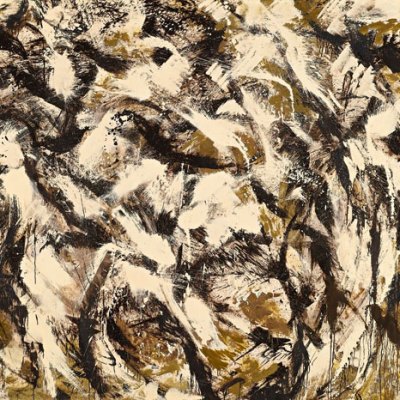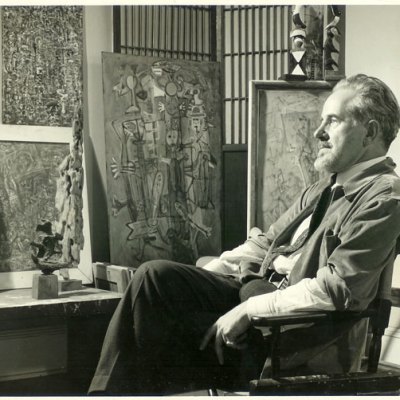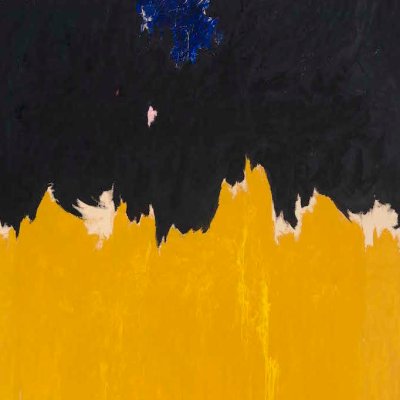In Frank O’Hara’s poem of 1964, ‘Adieu to Norman, Bon Jour to Joan and John-Paul’, the American art critic Irving Sandler is humorously characterised as ‘the balayeur des artistes’, or sweeper-up after artists – a moniker Sandler liked so much it became the title of his candid memoir, published in 2003. The name refers to at least two details of Sandler’s life: his early apprenticeship with the Tanager Gallery, an important artists’ co-operative where he tidied and locked up at the end of the day (he would become manager in 1956); and his talent for directing personal relationships and interactions with artists into lively criticism.
Sandler died on 2 June in Manhattan at the age of 92. As a champion of post-war American art, he had a long and varied career. Sandler’s criticism first addressed gestural abstraction and sculpture at mid-century: both The Triumph of American Painting (1970) – the somewhat chauvinistic tone of which he would come to regret – and New York School: Painters and Sculptors of the Fifties (1979) look back at the evolution of Abstract Expressionism from a point in time when the movement had been all but displaced from its pedestal. He went on to narrate what came after, with American Art in the 1960s (1988) and Art of the Postmodern Era: From the Late 1960s to the Early 1990s (1996), which demonstrate his critical versatility and poise. Each of these texts avoided the dense, polemical writing of his contemporaries, such as Harold Rosenberg and Clement Greenberg, whose side-taking Sandler largely steered clear of. As a critic, he published widely in magazines and periodicals, and was a regular contributor to Artforum and ArtNews, where he was senior critic from 1956–62.
In A Sweeper-Up After Artists, Sandler describes the encounter that first brought him into the world of Abstract Expressionism – the artistic movement to which his name is closely associated. In 1952, as a doctoral student in history at Columbia, Sandler visited MoMA and saw Franz Kline’s violent, gestural, and enigmatic painting Chief (1950), a moment he remembers as an ‘eye opening revelation’. A work that used cheap, low-viscosity house paint to press urgent lines and swirls on to the canvas using a simple monochrome palette, Chief became for Sandler the embodiment of a new kind of painting. He switched from being a student of history to modern art criticism and never looked back. ‘Chief began my life-in-art,’ he would reflect, ‘the life that has really counted for me.’ For Sandler, life and art were never neatly separate. His legacy is the large body of writing that combined and fused the two with an insider’s eye.
Sandler was a figure who wanted to be in the thick of it, not always scribbling notes on the sidelines. As a curator, he co-founded Artists Space in 1972, a co-operative gallery that promoted the early careers of several artists, including Cindy Sherman and Judy Pfaff. He also curated several acclaimed exhibitions, including ‘Concrete Expressionism Show’ at New York University (1965) and ‘The Prospect Mountain Sculpture Show’ at Lake George (1977), which overlooked David Smith’s Bolton Landing residence. He simultaneously led a distinguished academic career, teaching at the Pratt Institute and New York University, and going on to accept a professorship at Purchase College in 1972 where he remained until 1997. His debut novel, Goodbye to Tenth Street, set within the 1950s art world – a golden age he looked to construct in his criticism – will be published posthumously in October.
As befits the nature of art-historiographical taste, trend, and politics, Sandler was strongly criticised (along with pretty much everyone else who hung out at the Cedar Tavern) by the generation who came after. He was accused of being too close to the artists, lacking critical distance, and – worst of all – being a mouthpiece for Cold War-era liberalism. However, Sandler’s surveys are still valuable as an unrivalled record of the times set down in readable prose. It is widely repeated that no one saw more exhibitions in New York than Sandler, or participated on more panels and forums (such as those at the famous Artists’ Club, where he was a regular participant) for the length of time that he did. Sandler was first and foremost a chronicler of New York’s art world. When we evaluate his achievement, it is hard to ignore the feeling that there would have been precious few artists working there in the second half of the 20th century to have remained independent of his orbit.
Irving Sandler expressed the spirit of the times in ways that remained true to his belief that art and art-making should never be turned cold or theoretical by criticism: instead, art writing must excite our emotions and intellect, and he recognised that the communities, constellations and friendships that are formative to an artist can be useful ways of understanding the artworks themselves. ‘Reading about what a critic thinks is good and bad bores me,’ Sandler wrote. ‘What I care about are ideas or insights that open up ways for me to see and think.’


